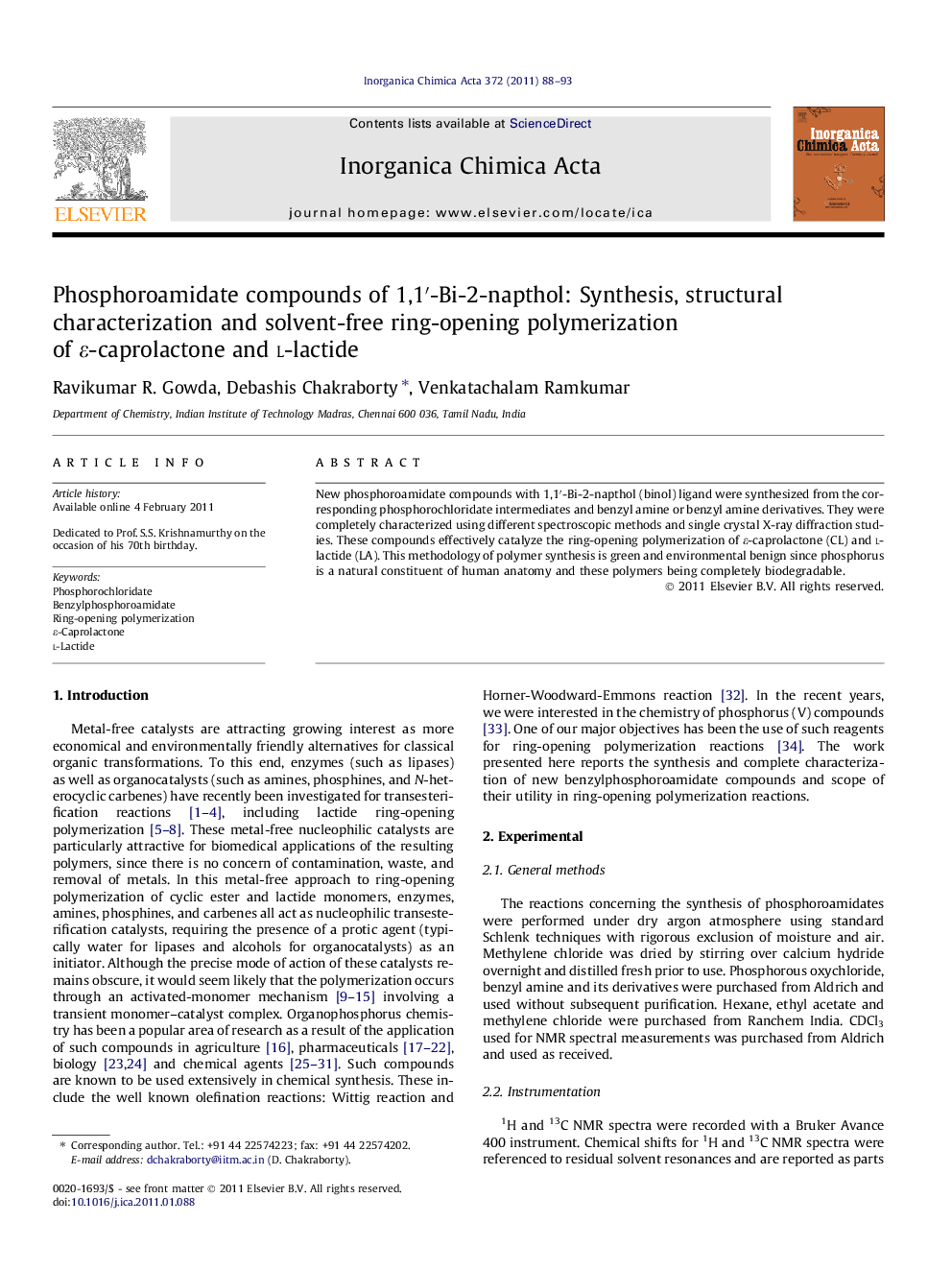| کد مقاله | کد نشریه | سال انتشار | مقاله انگلیسی | نسخه تمام متن |
|---|---|---|---|---|
| 1308876 | 975188 | 2011 | 6 صفحه PDF | دانلود رایگان |

New phosphoroamidate compounds with 1,1′-Bi-2-napthol (binol) ligand were synthesized from the corresponding phosphorochloridate intermediates and benzyl amine or benzyl amine derivatives. They were completely characterized using different spectroscopic methods and single crystal X-ray diffraction studies. These compounds effectively catalyze the ring-opening polymerization of ε-caprolactone (CL) and l-lactide (LA). This methodology of polymer synthesis is green and environmental benign since phosphorus is a natural constituent of human anatomy and these polymers being completely biodegradable.
The synthesis and characterization of new phosphoroamidate compounds containing binol scaffold along with their utility in ring-opening polymerization is discussed.Figure optionsDownload as PowerPoint slideResearch highlights
► The synthesis and complete characterization of new phosphoroamidate compounds containing a simple 1,1′-Bi-2-napthol scaffold is reported.
► These compounds have proved to be powerful initiators for the bulk ring-opening polymerization of l-lactide and ε-caprolactone resulting in high polymers.
► These polymerizations proceed in accord with the activated monomer mechanism.
► These results are based upon a simplified approach to the polymerization of cyclic esters and lactide using mild protogenic initiators.
Journal: Inorganica Chimica Acta - Volume 372, Issue 1, 15 June 2011, Pages 88–93